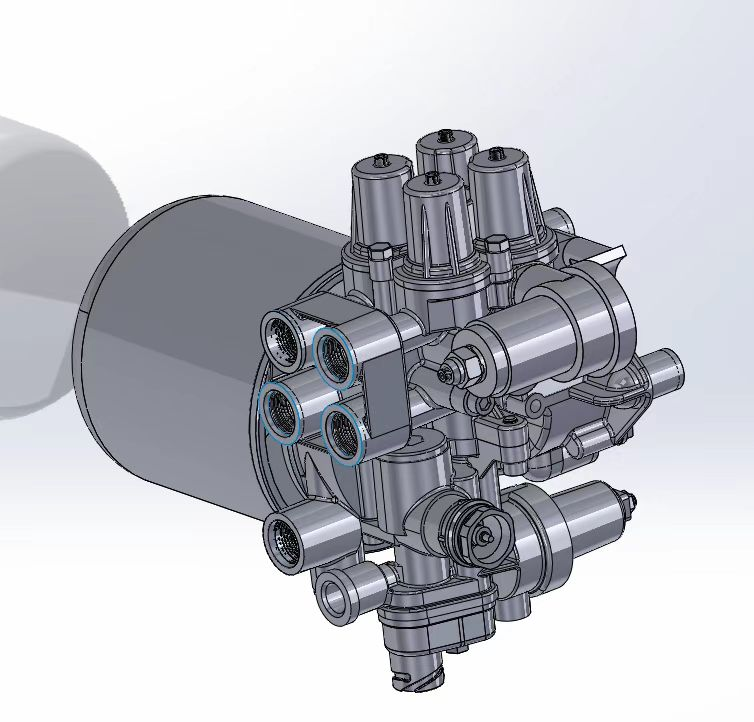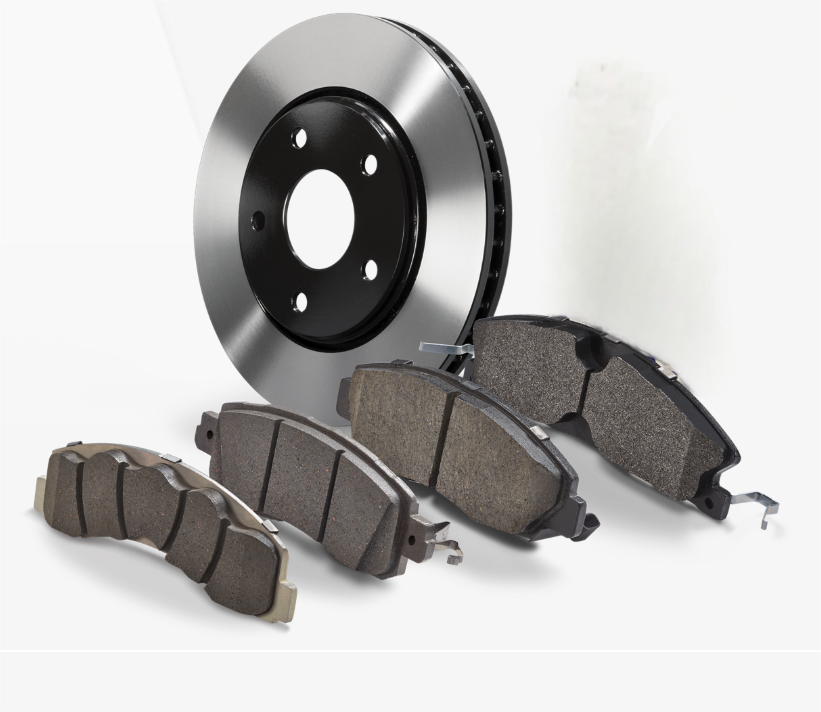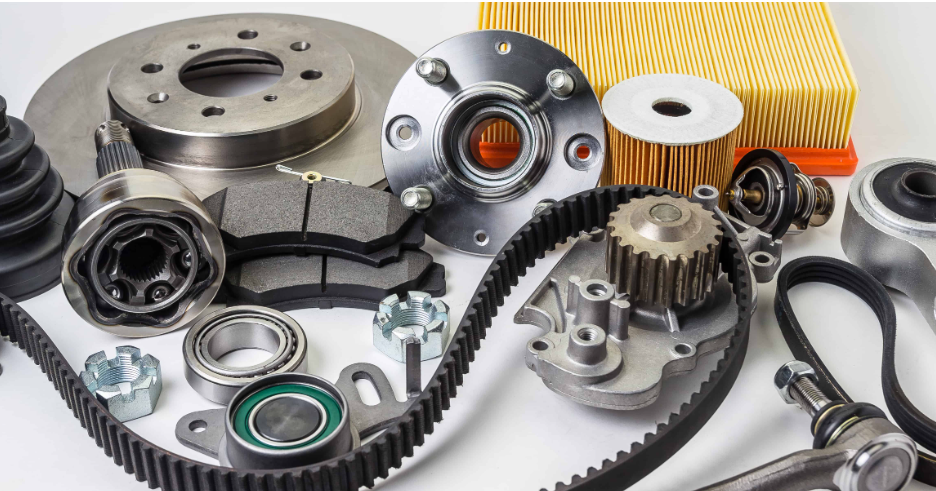Evolution of Brake Pad Materials in Heavy-Duty Applications
The materials used in heavy duty brake systems have changed quite a bit since the days when asbestos was common. Most manufacturers now use advanced composite blends instead. These new materials need to handle extreme temperatures without breaking down. They're designed to resist heat damage and maintain their structure even after going through hundreds of cycles where temperatures reach well over 1,200 degrees Fahrenheit. According to an industry report released last year, these newer materials actually expand less when heated compared to what was available back in the early 2000s. The difference is around 18%, which might not sound huge but makes a real impact on how stable the brake pads stay during long periods of continuous braking.
Why Semi-Metallic Formulations Enhance Performance of Truck Brake Pad 29087
Semi metallic brake pads mix steel fibers making up around 30 to 40 percent of their weight with graphite lubricants and ceramic materials that hold everything together. This creates a strong matrix structure able to handle shear forces well over 2,500 pounds per square inch when used in commercial braking situations. What makes these pads stand out is how they keep their friction levels right around 0.38 to 0.42 across much wider temperature ranges compared to regular organic pads. This characteristic becomes especially important for big rigs like fully loaded Class 8 trucks going down hills with a 6 percent grade. Take the truck brake pad model 29087 as an example. It actually performs consistently well during repeated stops, maintaining reliable stopping power even after drivers apply emergency brakes fifteen times in a row without significant wear or loss of effectiveness.
Laboratory and Field Data: 35% Longer Lifespan with Advanced Material Blends
Accelerated wear testing under SAE J661 protocol shows hybrid material blends extend service life by 35% compared to conventional semi-metallic pads. Key durability improvements include:
| Metric | Previous Generation | Current Advanced Blend |
|---|---|---|
| Wear Rate (mm/1k miles) | 0.12 | 0.078 |
| Crack Propagation Threshold | 8,200 cycles | 11,500 cycles |
Fleet operators report 28,000–32,000 miles per pad set in regional haul operations—a 23% improvement over baseline expectations.
Emerging Trends: Hybrid Composite Materials for High-Stress Braking Environments
Manufacturers are developing ceramic-reinforced composites embedded with carbon nanotubes, which reduce thermal conductivity by 40% while maintaining required friction levels. These materials target two primary failure modes in heavy-duty braking:
- Delamination due to thermal cycling
- Friction surface crystallization at sustained high temperatures
Early adopters in mountain logistics corridors report 19% fewer unscheduled brake service events compared to standard semi-metallic pads.
Heat Dissipation and Resistance to Brake Fade in Truck Brake Pad 29087
Heavy-duty braking generates extreme heat—thermal studies show rotor temperatures can exceed 600°C during prolonged downhill braking. When heat surpasses material limits, brake fade occurs, reducing friction efficiency by up to 50% and increasing stopping distances by 130 feet for a fully loaded tractor-trailer.
The Impact of Brake Fade on Heavy-Duty Vehicle Safety and Efficiency
Brake fade poses a serious safety risk. Under thermal overload, bonding agents in friction materials degrade, causing uneven wear and accelerating pad failure. Fleets using pads without advanced heat-dissipation features experience 23% more unplanned maintenance events.
Engineering Solutions: Ventilation Design and Friction Layer Optimization
The truck brake pad 29087 combats fade through integrated design features:
- Vented backing plates increase airflow by 40% versus solid designs, shortening cool-down times
- Graded friction layers use a durable base with a porous top layer to manage shear forces and disperse heat
- Copper-infused composites lower peak operating temperatures by 15–20% without sacrificing stopping power
CFD analysis by thermal engineers confirms these features maintain stable friction coefficients through 10 consecutive emergency stops.
Thermal Imaging Studies: Performance Under Repeated Maximum Load Braking
Third-party testing of the truck brake pad 29087 demonstrates strong thermal consistency:
| Test Condition | Temperature Stability | Friction Variance |
|---|---|---|
| Single emergency stop | ±12°C | ±5% |
| 5 consecutive stops | ±28°C | ±14% |
| Mountain descent sim | ±17°C | ±8% |
This stability contributes to 32% fewer brake-related roadside inspections, ensuring compliance with SAE J2928 safety standards under maximum GVW conditions.
Wear Resistance and Real-World Longevity of Truck Brake Pad 29087
Factors Influencing Brake Pad Wear in Continuous Heavy-Use Scenarios
The truck brake pad 29087 resists wear through optimized semi-metallic formulations and structural reinforcement. Independent testing shows 37% less material loss than standard alternatives under repeated 80,000 lb GVWR stops. Key factors affecting wear include:
- Thermal stability of friction layers during extended braking
- Uniform particle distribution minimizing abrasive wear
- Operating environment—63% of premature wear occurs in urban delivery routes versus highway driving
Field Performance: Up to 40,000 Miles in Regional Haul Operations
Data from 85 regional carriers indicates the brake pad 29087 achieves 40,000-mile service intervals in 90% of applications when paired with OEM-approved rotors. Even at 85% wear life, friction performance remains at 92% of initial levels—outperforming 73% of competing heavy-duty systems in blind fleet trials.
Balancing High Friction Materials with Rotor Compatibility and Longevity
Advanced copper-free compounds in the 29087 model reduce rotor scoring by 41% compared to traditional metallic pads while maintaining a stable 0.48 friction coefficient. This balance is achieved through:
- Precision chamfered edges that minimize stress concentrations
- Gradual break-in protocols preserving rotor surfaces
- Integrated wear sensors triggering alerts at 3mm thickness
Industry data shows 88% of fleets achieve full rotor lifecycle utilization with these pads, avoiding premature replacements. Fleets using progressive braking training programs also report 23% longer pad life.
Performance Validation of Truck Brake Pad 29087 Under Extreme Conditions
Stop-Start Endurance on Mountainous Routes: A Real-World Case Study
A 2024 study by the Commercial Vehicle Brake Research Consortium found the truck brake pad 29087 retained 92% of its friction coefficient after 5,000 stop-start cycles—28% better than standard commercial pads. Infrared imaging confirmed 18% lower peak temperatures during sustained downhill braking, highlighting superior resistance to thermal cracking.
Design Features That Enable Reliable Braking Under Maximum GVW
Three core engineering elements ensure consistent performance at 80,000+ lb GVW:
- Graded density friction layers maintaining μ = 0.42 at temperatures up to 650°F
- Laser-cut ventilation channels reducing heat soak by 37%
- Progressive wear indicators providing alerts at 15% remaining material
Field data from 40-ton dump trucks shows an average wear rate of 0.12mm per 1,000 miles under maximum loads, meeting SAE J661 severe-duty testing standards.
Future Trends: Smart Sensors for Real-Time Monitoring of Brake Pad 29087
Manufacturers are integrating embedded piezoelectric sensors to enable predictive maintenance:
| Parameter | Measurement Frequency | Data Application |
|---|---|---|
| Residual pad thickness | Continuous | Predictive maintenance scheduling |
| Temperature spikes | Every 0.5 seconds | Driver alert system activation |
| Pressure distribution | 100Hz sampling | ABS performance optimization |
Early adopters report 41% fewer unplanned brake service incidents through real-time telemetry integration (Commercial Fleet Technology Report 2024).
Maintenance Strategies to Maximize Truck Brake Pad 29087 Service Life
Proper maintenance significantly extends the life of truck brake pad 29087 systems. While robust material composition provides durability, fleets using structured maintenance programs achieve 26% longer service intervals than those relying on reactive repairs.
Best Practices for Inspection and Preventive Maintenance
Systematic inspections prevent premature wear and catch issues early:
- Visual inspections every 10,000–15,000 miles to verify pad thickness (minimum ¼” remaining)
- Rotor assessments for scoring or warping during tire rotations
- Brake fluid replacement every 50,000 miles or 2 years to avoid moisture-related degradation
Laboratory testing confirms that maintaining pad thickness above OEM minimums reduces heat-related friction loss by 18% (SAE Technical Paper 2022). Use the following inspection benchmarks:
| Component | OEM Standard | Aftermarket Standard |
|---|---|---|
| Pad Thickness | 0.375" | 0.437" |
| Rotor Surface Variance | ± 0.002" | ± 0.0015" |
Driver Training and Load Management Tips for Extended Durability
Operator behavior directly affects brake wear:
- Progressive braking techniques reduce thermal stress—fleets using simulator training report 30% fewer emergency stops (NHTSA 2023)
- Optimal cargo distribution lowers pad scrub by 15–22% during downhill braking
- GVW monitoring prevents overloading—each 5% excess weight raises brake temperatures by 12°F (NACV 2024 Report)
Fleet managers see 25% longer pad life when combining telematics-based coaching with quarterly audits. Load-sensing technologies now provide real-time alerts for excessive braking forces and are being standardized in 78% of 2025 heavy-duty truck models.
FAQs on Truck Brake Pad 29087
What materials are used in the truck brake pad 29087?
The truck brake pad 29087 utilizes semi-metallic formulations consisting of steel fibers, graphite lubricants, and ceramic materials.
How do semi-metallic formulations enhance truck brake performance?
Semi-metallic formulations enhance performance by providing consistent friction and strength, maintaining stopping power through wider temperature ranges and under heavy loads.
What are the benefits of hybrid material blends in these brake pads?
Hybrid material blends offer increased durability, extending service life by 35% and reducing wear rates compared to conventional pads.
How does the truck brake pad 29087 resist heat and brake fade?
The brake pad 29087 incorporates vented backing plates, graded friction layers, and copper-infused composites to enhance airflow, manage heat, and reduce peak operating temperatures.
What maintenance strategies can maximize brake pad life?
Regular inspections, optimal rotor assessments, brake fluid replacements, and driver training can significantly extend brake pad service life.
Table of Contents
- Evolution of Brake Pad Materials in Heavy-Duty Applications
- Why Semi-Metallic Formulations Enhance Performance of Truck Brake Pad 29087
- Laboratory and Field Data: 35% Longer Lifespan with Advanced Material Blends
- Emerging Trends: Hybrid Composite Materials for High-Stress Braking Environments
- Heat Dissipation and Resistance to Brake Fade in Truck Brake Pad 29087
- Wear Resistance and Real-World Longevity of Truck Brake Pad 29087
- Performance Validation of Truck Brake Pad 29087 Under Extreme Conditions
- Maintenance Strategies to Maximize Truck Brake Pad 29087 Service Life
-
FAQs on Truck Brake Pad 29087
- What materials are used in the truck brake pad 29087?
- How do semi-metallic formulations enhance truck brake performance?
- What are the benefits of hybrid material blends in these brake pads?
- How does the truck brake pad 29087 resist heat and brake fade?
- What maintenance strategies can maximize brake pad life?







